#Sybil Atteck
Explore tagged Tumblr posts
Text
As we join with the Chinese Community in Celebrating the Arrival of First Chinese immigrants on October 12th 1806 , ABVMTT has dedicated this week to paying tribute to some members of the Trinidad Chinese Community who made significant contributions to our social , cultural and economic development over the years.
A SHORT STORY OF SYBIL ATTECK ( 1911 - 1975)
by Keith Atteck
Today in Trinidad the people who remember Sybil Atteck are diminishing with time. There is an effort under way by her nephew Keith Atteck to write a biographic work that highlights Sybil and her contribution to art in Trinidad and Tobago and provide a historical context to the Chinese family that surrounded her and nurtured her passion for art.
Sybil Marjory Atteck was born on February 3, 1911 on her grandfather’s estate in Tableland, South Trinidad. She was the third girl child to her parents Philip Charles Atteck and Elizabeth Atteck (née George). Her elder sisters were Olive Atteck and Olga Atteck. She was followed by her next younger sister Rita Atteck who was born in 1912. The family were sent off to find their own way on a piece of land in Rio Claro purchased by their father to establish a cocoa estate. This estate was next to the de Verteuil Estate. I am still trying for find out exactly where this was.

The four girls were soon followed by three more girls and one son. In Rio Claro the children were home schooled. The family eventually reached eleven children. Sybil’s best subject was art and this interest was established early in her life. Granny George encouraged the family to move to Port of Spain as the girls were now of age to go to convent school. The family moved the children, mother and grandmother to Port of Spain in 1924 where the eldest three girls went to Bishop Anstey in Port of Spain.

Sybil’s desire to be an artist was tempered with the family’s dire financial situation after the 1930’s arrival of the witches’ broom and black pod diseases that whipped out much of the cocoa harvests and put the family in debt to their Chinese creditors. In September of 1930 Sybil got her first job at the Experimental Station in St. Augustine an she would go onto to other jobs before becoming an professional artist. May of her siblings also went to work all to help support the family. It was in 1930 that Sybil first exhibited her art as part of one of the first exhibitions sponsored by the “Society of Independents” that was formed a year earlier in 1929.

Let’s fast forward to 1960 - 1962. By now Sybil is a founding member of the Trinidad Art Society. She has studied art in England, Italy, Peru and the United States. She is the first West Indian artist to have exhibited at the Royal Academy in London. Sybil Atteck is a professional art teacher and mentor to many local artists, and has done major art exhibitions nationally and internationally, completed many commissioned works including murals, and is in the prime of her career. Trinidad is on the brink of independence. Sybil is involved in selecting the art works for the opening of the Hilton Hotel and she is on the committee to develop the symbols of the nation. With the help of her brother Philip Atteck and his wife Helen Atteck they open an art gallery and flower shop at the Hilton Hotel, and Sybil is deeply involved in the efforts of the Trinidad Art Society as the Art Society President. Wow what a burst of energy not only for Sybil Atteck but for Trinidad. And there is so much more.
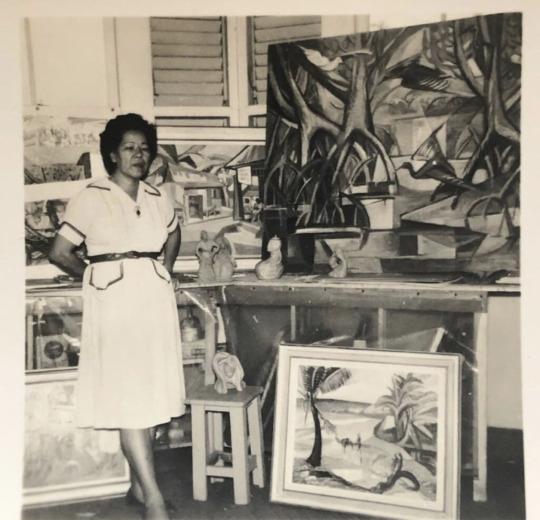
Sybil would soon face the most difficult moments in her life. In 1969 has her first bout with cancer. She tried desperately to raise the funds to pay for her treatment. With her future is now in doubt she fights on and survives this life challenge and continues with several exhibitions. In 1973 she is nominated for a Chaconia Medal (Gold) for her contribution to art in Trinidad and Tobago. However, her cancer returns and she was unable to be present to receive the medal. Her sister Olga, now returned to Trinidad to care for her ailing sister receives the medal on her behalf. Sybil struggles on through 1974 and eventually succumbs to her ailment on April 15, 1975.
However, Sybil Atteck is not forgotten. She is regaled in newspaper articles and magazines by her friends, peers, and may others. She is featured on Stamps of Trinidad and Tobago. Sybil Atteck is even in a crossword puzzle. And in 2006 she is featured in the celebration of the Bicentenary of the Chinese arrival in Trinidad. Her legacy lives on in the memory of her nephew, in the art that can be seen in Trinidad and around the world, and in the heart of the many students who had the privilege to be taught and mentored by Sybil Atteck.
-------------------------------
#sexypink/Sybil Atteck#sexypink/iconic Trinbagonian Painter#sexypink/female Artists of Trinidad and Tobago#Keith Atteck
0 notes
Text

Sexypink - A huge loss to Trinidad and Tobago. Thank you Geoffrey for your vision, kindness and love.
..............................

Geoffrey's contribution to Art history. He was the definitive writer on Cazabon.
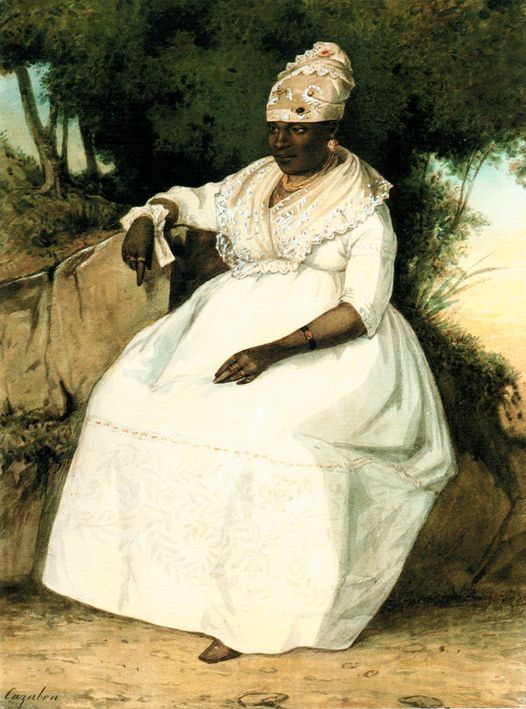
An image of one of Cazabon's paintings.
Finally, a beautiful tribute to Geoffrey MacLean from one of many friends.
.................................
TRIBUTE TO GEOFFREY MACLEAN. In each island nation of the Eastern Caribbean, economies of scale make it so that there are only one or two (and if they are lucky, three or four) local experts in some field of study which has little to do with industry or clerical work but everything to do with the national character and its history. Because they are often without precedent, these experts often have had to travel abroad for their training or are otherwise self-trained in their chosen sector of the liberal arts/humanities/social sciences.
Trained architect and avocational art historian Geoffrey MacLean was one of these indispensable sages in the field of visual studies and the built environment. He was the world’s foremost specialist on nineteenth-century landscape and genre painter Michel Jean Cazabon. Cazabon was a partially unwitting member of a global late colonial/early post-colonial landscape painting tradition that encompassed artists such as Mexican José María Velasco, the Chartrand brothers of Cuba, Filipino painter Fernando Amorsolo, and the painters of the Hudson River School in the United States. What all of these artists had in common was their urgent need to capture and pay tribute for posterity to the natural beauty of their respective lands before that “Edenic” verdure was despoiled by then-already encroaching industrialization.
MacLean’s passion for Cazabon pressed him not only to hone further the scholastic abilities he had already developed at Presentation College in his native Trinidad and Bristol University in the U.K. but to travel back and forth between the Caribbean and Europe hunting down examples and collections of Cazabon’s work. He also assisted the government of the Republic of Trinidad & Tobago in the acquisition of some Cazabon works for display in its National Museum and Art Gallery.
MacLean was generous with his knowledge, his time, and with his published materials. Every time I visited him, I came home with an armful of books and catalogues (one of my favorites is an unassuming little pamphlet of a catalogue called Chinese Artists of Trinidad & Tobago which probably played some part in my decision to write the book about Sybil Atteck on which I am currently working with Sybil’s nephew Keith). In graduate school, I relied heavily on MacLean’s Cazabon books for the research I was doing on colonial Latin American and Caribbean painting. MacLean’s enthusiasm for Cazabon’s genre painting, especially his rapt verbal and written descriptions of the late 19th century painting Negress in Gala Dress (pictured here) revealed to me that Cazabon’s paintings of local “types” (e.g., “Negress” instead of named individual) was sometimes a form of real portraiture and thus departed the tipo de país-to-costumbrismo continuum that we sometimes use in Latin American art history. Cazabon loved his people too much and included too much implied biography and other narratives in those paintings, to reduce their subjects to mere “types.” His titles were thus deceptively taxonomic.
Architect, scholar, art gallery director Geoffrey MacLean’s contribution to the study and preservation of T&T’s architecture was legendary even before his passing. He has searched out original plans for fretwork houses and saved some of these architectural jewels from the bulldozers of “developers.” He has done the same for members of the Magnificent Seven around the Queen’s Park Savannah and taught workshops on both the civic and residential architecture of Trinidad & Tobago. As MacLean himself now passes into legend, we are left with the perennial question in these small and mid-sized islands of the Eastern Caribbean each with their two or three experts on local art and architecture – who will pick up the torch?
~ Lawrence Waldron
#galleryyuhself/Geoffrey MacLean#galleryyuhself/publisher/gallery owner/architect#galleryyuhself/bereavement#galleryyuhself/medulla gallery#tumblr/aquarella gallery#tumblr/cazabon books#tumblr/architect#trinidad and tobago#Geoffrey MacLean#architect#visionary#gallery owner
0 notes
Text
Sybil Atteck, “Moon Dancers”, 1973

1 note
·
View note
Text
Legacy of Sybil Atteck unveiled at Canadian gallery - TT Newsday
Legacy of Sybil Atteck unveiled at Canadian gallery TT Newsday http://dlvr.it/SynzF7
0 notes
Photo

Sybil Atteck, b. 1911, d. 1975 Self-Portrait Trinidad and Tobago (c. 1970) [Source]
Wikipedia says:
Sybil Marjorie Atteck was a pioneering Trinidadian painter known for her work in watercolor. She is celebrated as Trinidad and Tobago's "first outstanding female painter" and was a founding member of the Trinidad and Tobago Art Society, the oldest established art organization in the Caribbean.
She was also partly of Chinese descent!
13 notes
·
View notes
Photo

Paintings by Sybil Atteck @caaminla @pstinla #circlesandcircuits
0 notes
Photo

The Inherent Nobility of Man | 1962 | Carlisle Chan.
Era Of Political Independence
Carlisle Chang's Inherent Nobility of Man, designed for Trinidad's new Piarco International Airport in 1962, his mural Conquerabia for the new Port of Spain City Hall and Cosmic Event for the facade for the new Textel building in Port of Spain, established him as Trinidad and Tobago's leading national artist of the time. The later destruction of Inherent Nobility of Man to make way for the extension of the Airport buildings in 1977, coincided with the end of Chang's painting career.
Ou (Edwin) Hing Wan (b.1932 d.1976) was paralyzed and confined to a wheelchair from the age of 19. Yet, with only the partial use of his right hand he was able to produce some of Trinidad and Tobago's finest watercolours. Hing Wan, encouraged by Sybil Atteck and Noel Vaucrosson (b.1935 d.1996), first exhibited at the Trinidad Art Society's exhibition of 1951. In 1975 he mounted his only one man exhibition at the National Museum and Art Gallery.
0 notes
Text
Trinidad’s Arts & Culture
Visual Arts
The seven galleries of the National Museum house some of the country’s best artwork, and a number of other fine galleries showcase new work. The Museum (623-5941) has a small representative collection of local art which is on show for most of the year, and a collection of watercolours by the country’s leading 19th-century painter, Michel Jean Cazabon.
The Art Society has an annual show of new work that includes paintings, drawings, and sculpture. The society also organises plein-air painting sessions in picturesque venues, mostly in the dry season of course.
Art exhibitions take place year round, and primarily between Easter and Christmas, at several established galleries and other venues that might include an artist’s home, a restaurant, or the lobby of a corporate headquarters. Popular galleries include: 101 Art Gallery, Fine Art, Horizons, Medulla, Softbox Studios, and Studio 66.
There is a significant art market, and a number of notable local artists. Landscape features very prominently in a lot of local painting, but there’s also abstract and avant-garde work to be seen.
Names to look for: MP Alladin, Sybil Atteck, Ralph and the late Vera Baney, Isaiah Boodhoo, Edward Bowen, Carlisle Chang, Leroy Clarke, Chris Cozier, Ken Crichlow, Jasmine Girvan, Jackie Hinkson, Paul Llanos, Dermot Louison, Che Lovelace, Shastri Maharaj, Wendy Nanan, Lisa O’Connor, Shalini Seereeram, Peter Sheppard, Irénée Shaw, Sundiata, Jasmine Thomas-Girvan, and Noel Vaucrosson, to name but a few; and the late Michel-Jean Cazabon, Pat Bishop, and Boscoe Holder.
http://www.discovertnt.com/articles/Trinidad/Trinidad-Arts-Culture-An-Overview/60/3/19
1 note
·
View note
Text
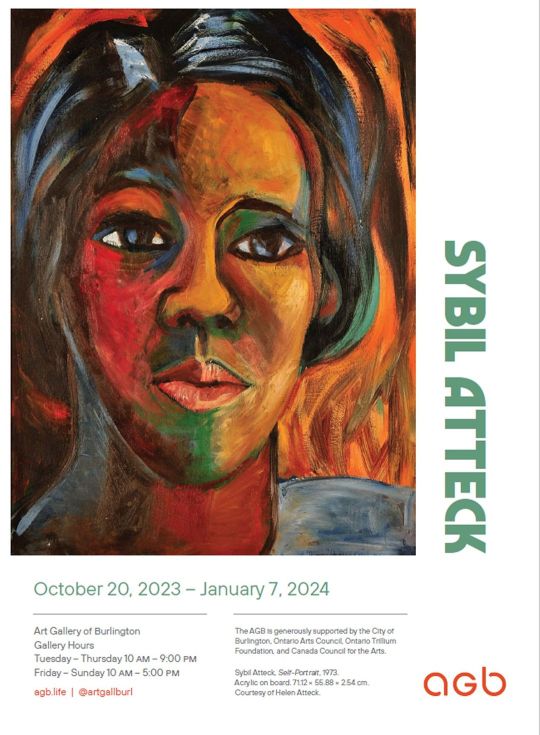
Sexypink/ From the Facebook of Keith Atteck, taking on the legacy of one of Trinidad and Tobago's most important female Artists
................................
On Drawing, an exhibition of drawings by faculty of the Edna Manley College. Opening Tuesday September 12 at the Cage Gallery on campus, 6pm. Free, open to the public.
#sexypink/Sybil Atteck#sexypink/Art Gallery of Burlington#sexypink/Keith Atteck#Trinidad and Tobago Artists#Pioneering Trinidad and Tobago Artists#tumblr/Sybil Atteck
0 notes
Text
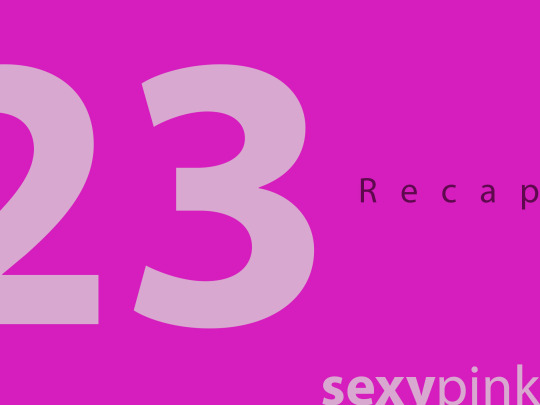


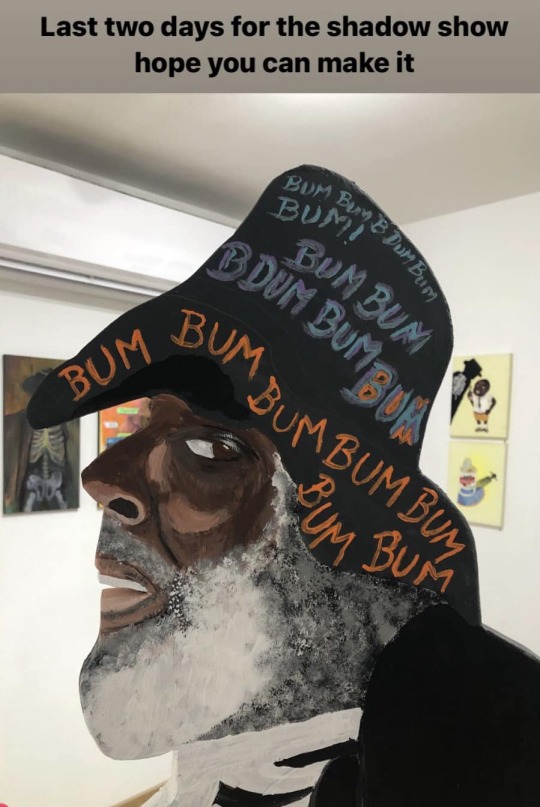
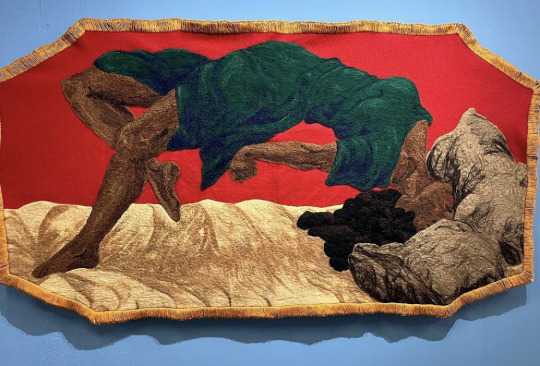

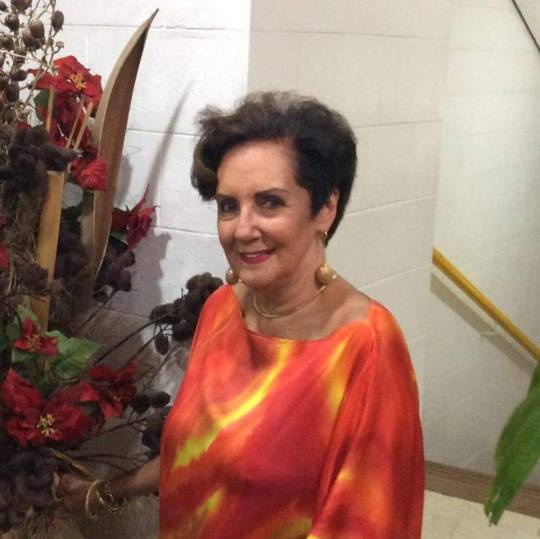
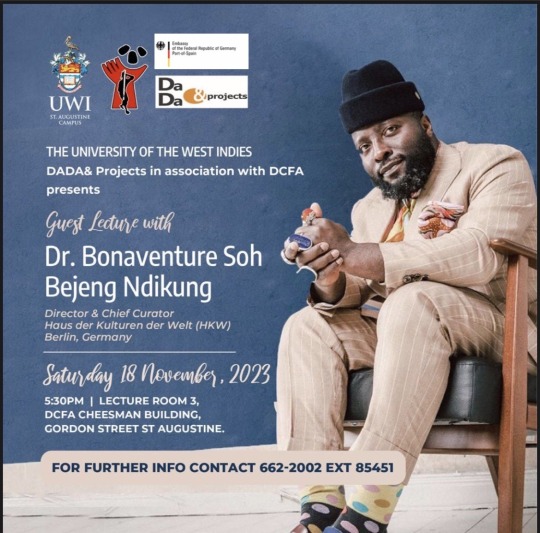
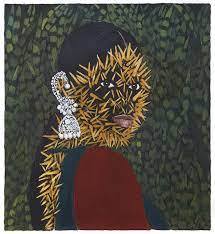
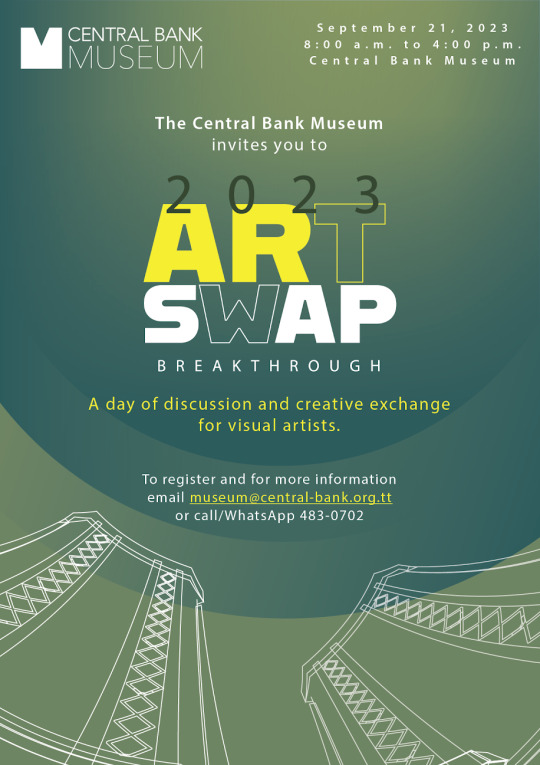
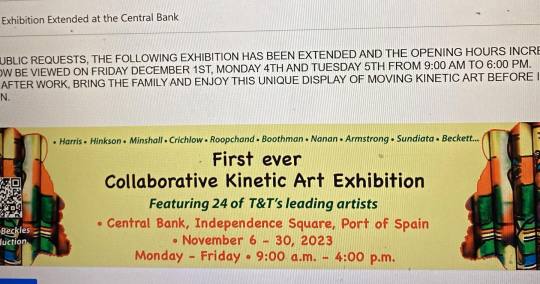
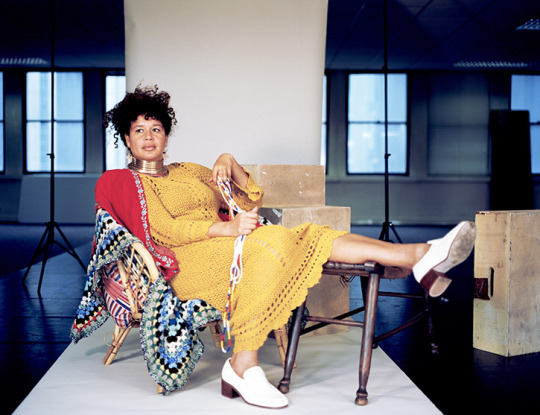



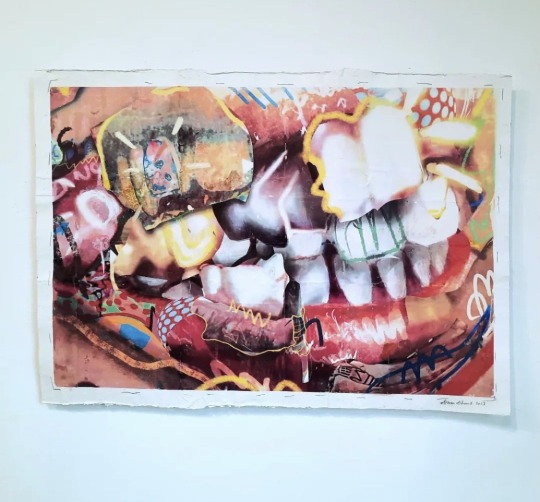

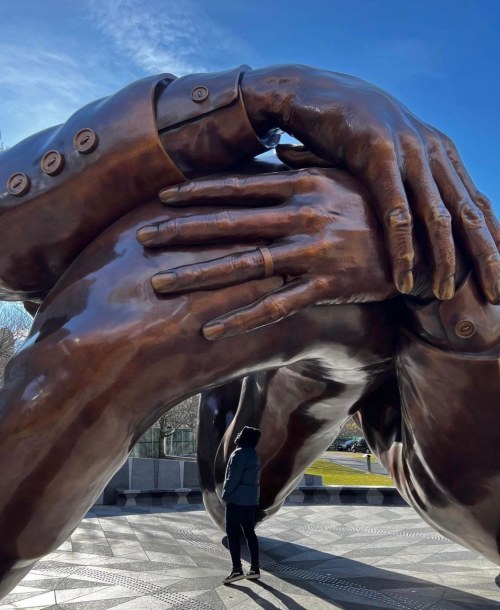


Sexypink - Another year of fully gorging on everything Art. So many shows and projects, passings and beginnings. Happy 2024 to all....here is a look back of some of the highlights and challenges of the year.
Sybil Atteck continues
Mario Lewis Part I and II Forest Notebooks
Shadow Show @ A Space inna Space - The Frame Shop
Jamaican Artist Catrina Coombs
Marinna Shareef's mind benders
Deltex Artshop owner and legend in her own right Christine Millar passes away
Dr Bonaventure gave us wisdom and then some
Guadeloupan Kelly Sinnapah Mary
Art Swap @ Central Bank of Trinidad and Tobago
Guy Beckles Kinetic Collaborations with 24 Contemporary Artists
Barbadian Scottish Alberta Whittle causes controversy
Adele Todd shows in Seattle
Sheena Rose sells to GOAT Venus Williams
Sarah Knights paints THE KING
Jamaican Stephen Schmid shows teeth
Sharon Camille Harding ~ Rest in Peace
Coretta and Martin's sculpture causes awe and confusion
Leroy Calliste (The Black Stalin) dies.
#sexypink/a year in Art#sexypink/Caribbean Art 2023#sexypink/2023#tumblr/Art history#tumblr/Art in the Caribbean and beyond 2023#tumblr/a year in Art
1 note
·
View note
Photo
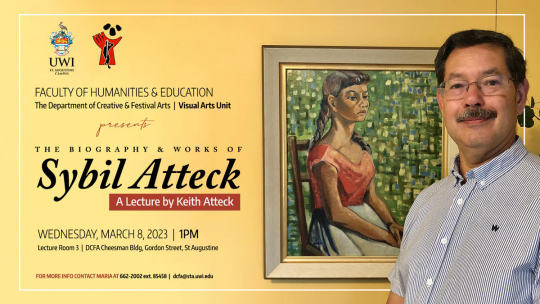
Sexypink - TODAY
Join us this Wednesday for a lecture presentation by Keith Atteck on the Biography & Works of Sybil Atteck on International Women’s Day, Wednesday March 8, 2023. Key components of this presentation include Sybil Atteck’s significant artworks, her developmental periods, and her interactions with local and international artists and personalities.
See it here-: https://fb.watch/j8wExF_aAa/?mibextid=j8LeHn
#sexypink/Sybil Atteck#sexypink/UWI Lectures#sexypink/Keith Atteck#sexypink/Icons of Trinidad and Tobago Art world#International Woman's Day#tumblr/Sybil Atteck tumblr/UWI Lectures#tumblr/The biography and work of Sybil Atteck#Sybil Atteck#icons#artists of trinidad and tobago#history#culture
2 notes
·
View notes
Photo

S E X Y P I N K
Sybil Atteck’s portrait of Althea McNish
101 Gallery Woodbrook Trinidad
#sexypink/Sybil Atteck#sexypink/Althea Mcnish#Trinidad and Tobago female pioneers#Tumblr/Sybil Atteck#tumblr/Althea McNish#textile artist#painter#portraiture
4 notes
·
View notes
Text
Keith Atteck holds talks on aunt Sybil’s work - TT Newsday
Keith Atteck holds talks on aunt Sybil’s work TT Newsday http://dlvr.it/SkTR7s
0 notes
Text
LEGACY*** Sybil Atteck d.1975
Sybil Marjorie Atteck
Sybil Atteck was born in Rio Claro, Trinidad on February 3rd, 1911. When she was in her early teens, the Atteck family moved to Port of Spain where, encouraged by their grandmother, they became involved in many of the art forms: music, crochet, embroidery, flower arranging and designing Carnival costumes. The family members even formed a small orchestra, with Sybil playing the Hawaiian guitar. Sybil and her six sisters were also encouraged to be intellectually independent.
Atteck joined the Botanical Department of the Ministry of Agriculture in 1928, using her drawing skills to produce botanical renderings. Some of these were shown at an exhibition organized by the Society of Trinidad Independents in 1930. In 1934, Atteck went to London where she studied at the Regent Street Polytechnic. Returning to Trinidad, she resumed her work at the Department of Agriculture.
In 1948 she continued her studies in Lima, Peru, at the Escuela de Belles Artes. Her primary interest there was in Inca pottery, a form of expression that she could relate to the Caribbean's pre-Columbian art. In 1943 Atteck attended the School of Fine Arts, Washington University, St Louis, Missouri, where she was a student of the German Expressionist painter, Max Beckmann. Beckmann was to have a profound effect on Atteck's work and, in turn, a controversial impact on the Public Library in Port of Spain and at the Town Hall in San Fernando. Her work was strongly criticized as being un-Trinidadian. Despite this, Atteck's images and style form the nucleus of Trinidad's first recognizable school which prevailed throughout the 1950's and '60's. Those influenced by the Atteck genre were, among others, Carlyle Chang, Willi Chen, Leo Glasgow and Nina Squires. Through her expressionist images, Atteck celebrated the birth of a new nation and the hopes and aspiration of Independence, portraying Trinidad's landscape, birds, dances and festivals as the new symbols of national identity.
Cricket
Education
1948 Escuela de Belles Artes, Lima, Peru 1942 University for Foreigners, Italy 1935 School of Fine Arts, Washington University, St Louis, USA ( B.F.A.) Regent Street Polytechnic, London Bishop Anstey High School, Port of Spain
Professional Employment 1966 - 71 St Francois Girls College, Art Mistress 1952 - 60 St Joseph Convent, Port of spain, Art Mistress 1943 - September - Foundation Member, Trinidad Art Society, Executive and Life Member Part time lecturer on Art, Extra-Mural Separtment, University of the West Indies and the Dept .of Culture 1931 - 42 Imperial College of Tropical Agriculture, P o S, Scientific Illustrator-Cartographer- Min. of Agriculture
Country Shop
Exhibitions
Group Shows Exhibitions of the Trinidad Art Society
Solo Exhibitions 1948 First Solo exhibition, Trinidad Public Library Royal Academy Summer Exhibition, London Alcoa Caribbean Exhibition
SYBIL ATTECK An Appreciation- By Carlyle Chang
“Some things we understand; others we don't, but we must live with both”. Scribbled across one of her numerous sketches, a vendor asleep, the pencilled observation provides a succinct summation of the career of Sybil Atteck. Born early in this century, she was a product of that peculiar society, in Trinidad, when the accomplished gentlewoman sang, danced, entertained, played the piano, embroidered, spoke French, played tennis and was a witty conversationalist. At the same time it was a society which enjoyed the latest continental innovations in every facet of living — automobiles, motorcycles, flappers, silk stockings, and if daring, beach pyjammers, the charleston, jazz and Art Nouveau.
Sybil came from a family of considerable accomplishment in the acceptable sense, which apart from the usual graces permitted its daughters to be educated, to work in offices and to paint. A family so large it formed its own orchestra, so that the daily round was embellished with elegant musical soirees, much as they did in the drawingrooms of London, Paris or Park Avenue, but also for centuries past as in Goa, in Bengal or in China. Sybil's career spans that most critical formative half century which saw, in our country, the first tentative movement towards the development of a creative community, in 1930; its virtual self immolation in social disgrace, in 1938; the watershed Guardian Exhibition of 1939; and in 1943, the establishment of the Trinidad Art Society which she helped to found. She was already at that time a very proficient artist engaged in making scientific drawings and watercolour renderings of our insect life and flora for the Imperial College of Tropical Agriculture. The necessity for accurate detail seen through the microscope and the equally exact rendering in that most difficult medium of watercolour was to pervade the entire output of her future years.
Other major experiences contributed to her thinking and so to her work. An extended visit to Peru where the stunning heritage of Inca pottery awakened her to the beauty of clay as a plastic medium; but also to the native observation, elegant, stylised and precise, art as record, parody or social comment. The other was her studies in America under the German expressionist Max Beckmann, part of that vast concourse of European creators and thinkers fleeing the holocaust, who became the energising force and backbone of the American thrust.
These experiences together with her studies of Cezanne's composition and theory, opened up for her, as it did for every serious painter since, a redefinition of technique but also an appreciation of expressionism as the ultimate creative tool. Imitation of the visual world was no longer an end in itself and Art encompassed the ability to express the most profound human experience, including abstract thought.
Sybil's first solo exhibition at the Trinidad Public Library in 1949 on her return from America was devastatingly criticised by the accepted critic of the day who mercilessly chastised her as being un-Trinidadian — a circumstance which repeats itself occasionally as in 1956, and recently in 1984, by those whose egocentric abuse of press privilege often creates a lifetime of irremediable distress. It was many years before she permitted herself the luxury of another solo exhibition, preferring to exhibit abroad, as in the Royal Academy, London, becoming the first native artist to do so.
In the mid-fifties she was drawn into the sweeping nationalism which accompanied the move towards West Indian Federation, and later to Trinidad and Tobago Independence. Led by Professor Dan Crowley and later, Andrew Pearse; by Andrew Carr another Art Society founding member, and by Beryl McBurnie charged with the motivation to use Dance as a galvanizing force, the intellectual community such as it was moved to patronise, to record and to interpret the native culture, establishing its validity and consolidating its central role in engendering a sense of nationalism.
Sybil's participation, nightly sketching in the gayelles, in the arenas of Bele, bongo and Shango, and inevitably in the marketplaces, home of the tired peasant, produced in her painting an essentially creole vocabulary; a drawing shorthand in which the peculiar gesture of the people was succinctly recorded with an economy of line. She created, in fact, a personal vernacular, in the painter's idiom. Some of the grotesqueries evident in her work record her concern with what is uniquely ours; our West Indian body language.
Not for her the languid grace of noble savage which her critics had and continue to promote. And one of her most potent expressions has been the figure of the dancer resting, which she executed in local clay, a la Peruvienne, and hich occurs in some of her most important paintings, such as her Belair Dancers commissioned for the Central Bank collection.
The culmination of these preoccupations appear in the two large terra-cotta friezes in the Trinidad Hilton, but echoes of them appear in the Belair Hotel mural and paintings of the sixties.
Later she was to reassess her commitments, particularly under the growing advance of Abstract-expressionism, which she appears not to have understood. Nonetheless she developed a different compositional approach, more geometric but with less acidic colour, and less concern with the human form except as didactic expressions of other ideas, such as in her carnival and hosein paintings.
Throughout her career Sybil devoted considerable time and energy to firmly establishing the Trinidad Art Society. She had been its first secretary and twenty years later its President and Honorary Life Member. In many ways a simple person, she was oblivious to the political currents which surrounding her and to which she became an unwitting tool. At this short space it is still difficult to fully assess her work although outlines of her influence are still discernible, in Chang, Chen, Nina, Minshall Sr. among others. Most important she helped to surmount insular barriers and remains a pivotal person in our brief creative history.
But Art is long and Life is short; and some things we understand, and others we don't, but we must live with both.
#Sybil Atteck#Trinbagonian Artist Sybil Atteck#Painting in Trinidad and Tobago#Chinese Trinbagonian Artists
0 notes